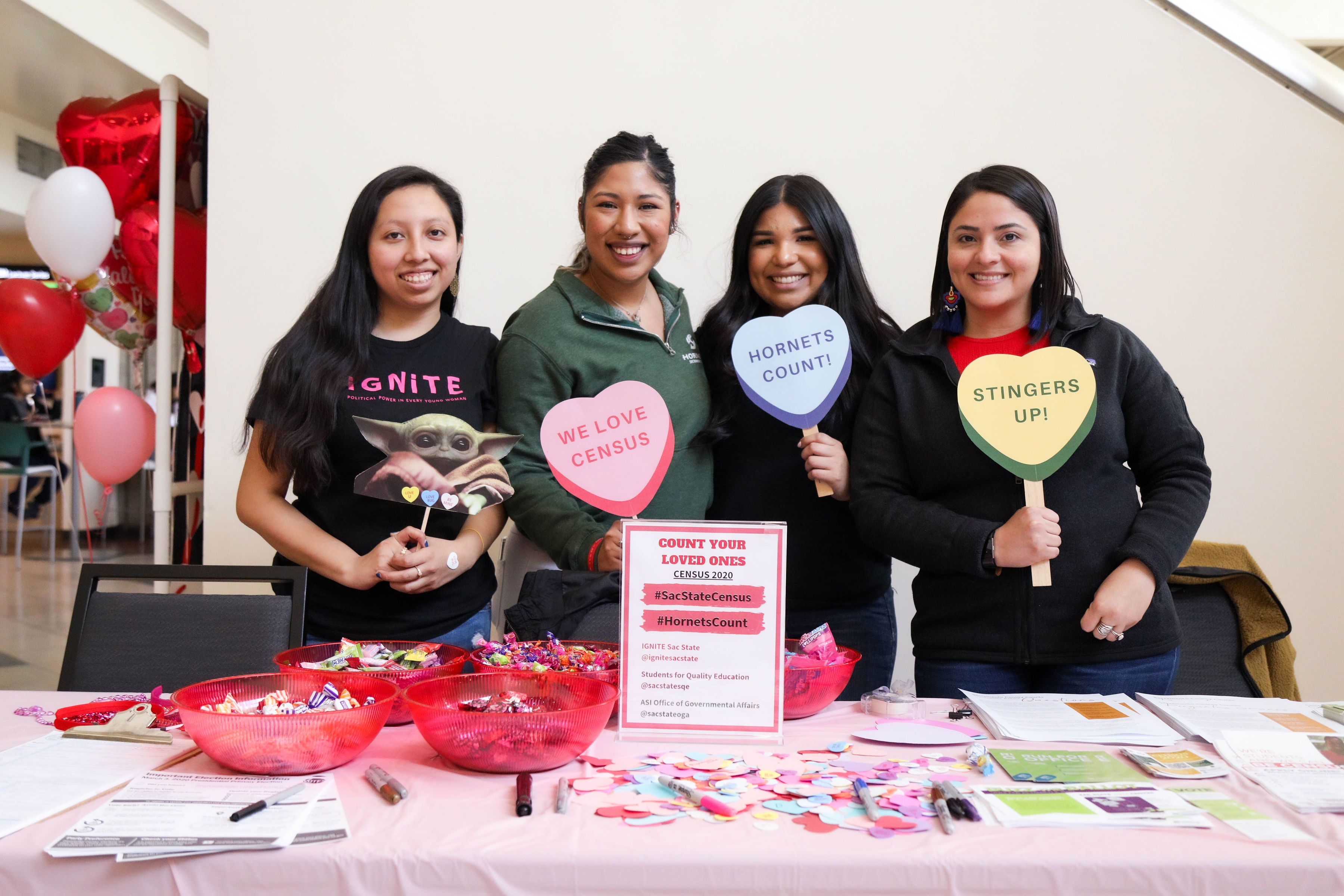By Cynthia Hubert
Sacramento State’s elaborate plans to assist in the 2020 Census collapsed under the weight of coronavirus concerns that forced the University to cancel campus gatherings and send students, faculty and staff home indefinitely.
But the count goes on, with Sac State’s census leaders pivoting to online efforts to ensure that as many people as possible participate in the critical project. The census occurs every 10 years and determines political representation and equitable distribution of public funds.
“Across California and the country, the census is more important than ever,” said Viridiana Diaz, assistant vice president for Strategic Diversity Initiatives at Sac State. “The last thing we need is for people to be under-counted. The need for resources is going to be greater than ever before” because of the toll that the virus continues to take on society and the economy, Diaz said.
 Sac State continues to push to make certain as many people as possible participate in the 2020 Census, and especially aims to reach traditionally underserved populations. (Photo courtesy of the Serna Center)
Sac State continues to push to make certain as many people as possible participate in the 2020 Census, and especially aims to reach traditionally underserved populations. (Photo courtesy of the Serna Center)For months before the COVID-19 outbreak, Sac State’s 2020 Census Collaboration Team had been coordinating efforts to ensure a successful count. Planned were a campus-wide event touting the importance of census participation, Census 101 workshops to give members of the campus community tools for achieving an accurate count, and the much-anticipated appearance of civil rights icon Dolores Huerta to deliver a lecture about the census and its impact.
As part of Sac State’s Alternative Spring Break Program, student volunteers were scheduled to go door to door to encourage and assist residents in completing their census forms.
“We had a great calendar of events and activities to engage the entire population,” said Diaz. “All of them were canceled. As a result, we had to get very creative about how to deliver our message and accomplish our goals.”
The Collaboration Team has launched several online Social Media Challenges, including an art contest, a challenge to student organizations and clubs to boost the census count, and virtual workshops. Sac State also has assembled “census ambassadors” who are reaching out to members of campus populations that have traditionally been difficult to count, including the LBGTQ community, homeless students and undocumented people, Diaz said.
For more information about census efforts or to get involved, go to the Sac State Student Affairs website.
Despite the dramatic change in plans, enthusiasm for the census project remains high, said Noel Mora, Sac State’s Serna Center coordinator and a member of the collaboration team.
“Our students no longer are in front of us face to face, but they are still there,” Mora said. “They are ready to make sure that members of their communities are counted. The engagement hasn’t stopped.”
Census ambassadors are reaching out to their communities in a variety of ways, sharing social media challenges, conducting online meetings, phone banking and presenting information to housemates, including family members.
“Like all of us, our ambassadors are at home with their families, so they are conducting outreach with them in addition to their college peers,” said Diaz.
Diaz and Mora said it is impossible to predict how effective the new approach might be, but are optimistic that students will embrace it.
“It will be really interesting to see how it works out,” Diaz said. “Students already are quite engaged with social media. It’s really their preferred method to communicate. So we hope we’ll be successful.”
Mora said the coronavirus pandemic appears to have helped students put a sharper focus on issues and places affected by census participation.
“They’re thinking about the direct impact of the census on their communities,” he said. “They’re thinking about how much they value parks and schools,” among other services funded by public dollars. “They are paying attention.”
